The Japan Aerospace Exploration Agency (JAXA) H2-A rocket will lift off on the morning of August 27 from the Tanegashima Space Center, carrying an advanced imaging satellite and a lightweight lander. It is expected to land on the Moon in January or February next year.
If successful, JAXA will have a boost to rebuild its reputation after a series of costly failures over the past year.
Professor Jiro Kasahara at Nagoya University's Department of Aerospace Engineering said previous failures had put additional pressure on JAXA in this launch.
Landing on a moving celestial body is a crucial technology to master, he said. While other space agencies have overcome failures, JAXA will be in trouble if it makes the same mistake. “Japan has only one chance,” said Professor Kasahara.
Failed launches
JAXA’s misfortune began in October 2022, when the sixth Epsilon rocket launch, carrying two satellites in JAXA’s first commercial contracts, failed mid-flight.
This is the first major failure of a Japanese rocket since 2003. Investigation results show that a part of the rocket was faulty and could not stand upright to reach orbit.
A month later, JAXA revealed that a research team had falsified large amounts of data collected during a life simulation experiment on the International Space Station (ISS).
In February 2023, the agency canceled the first launch of the H3, a new generation product of the H2-A rocket, after encountering a system failure between the main engine and the side booster.
Mitsubishi Heavy Industries has spent nearly a decade developing the H3, a single-use rocket that aims to provide a cheaper, more reliable alternative to competitors like SpaceX's reusable Falcon 9.
A second launch in early March ended even more disastrously, as the rocket's second-stage engine failed to ignite.
Operators sent a self-destruct code as it rose into the air, causing the craft and the satellite it was carrying to plummet into the Philippine Sea.
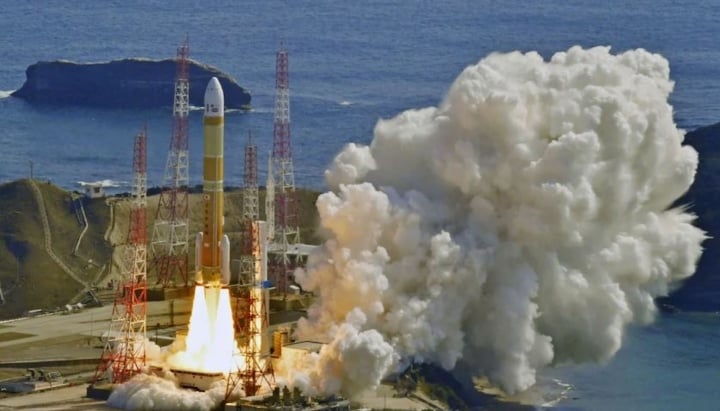
The moment the H3 rocket lifted off from the launch pad at the Tanegashima Space Center on March 7. Photo: Reuters
And then in July, the Epsilon S (the seventh version of the rocket) engine exploded during a ground test, causing a fire that burned down a facility in Akita Prefecture.
While there were no injuries, the incident was a setback not only for the Epsilon line but also for the H3, as both rockets use the same new solid rocket booster.
“ Considering other recent events, we are looking to do whatever we can to improve the situation,” JAXA Director Hiroshi Yamakawa said at a press conference after the accident.
JAXA has narrowed down potential causes of the H3 failure to the spark plug or controller in the second-stage engine.
The agency could prevent a repeat of the incident in the next H3 rocket launch attempt, scheduled before the end of the current fiscal year in March 2024.
“ Before this year, Japan’s rockets were performing well, perhaps too well, so there was a risk of some errors,” said Professor Shinichi Kimura, director of the Center for Innovative Space Systems Research at the Tokyo University of Science . The Aug. 27 launch will give JAXA a chance to turn things around. “It’s an important mission, both scientifically and symbolically,” he said.
Professor Kimura and Professor Kasahara are advisors to the government panel investigating the H3 malfunctions.
Startup Support
As Japanese entrepreneurs try to build space startups, they will receive some support from JAXA. Space Walker is the first private rocket company to receive funding from JAXA. The agency plans to support more space businesses.
Notably, the most famous of the startups suffered a setback earlier this year.
Tokyo-based Ispace's Hakuto-R lander was minutes away from making the country's first lunar landing in April. But it lost contact with controllers on Earth. It then ran out of fuel and began freefalling on its final approach.
Ispace said it would launch the second mission in early 2024 as originally planned.
The H2-A — the agency's most reliable rocket with just one failure in 42 launches since 2001 — will carry the small lunar lander, or SLIM, later this week.
At less than 3m tall, this lander could pave the way to the Moon for other probes with high navigation accuracy.
The H2-A rocket will also carry the X-ray Imaging and Spectroscopy Mission (XRISM), a satellite that will help scientists observe plasma in stars and galaxies.
(Source: News/Bloomberg)
Source



![[Photo] Hungarian President and his wife take a walk and enjoy the view of Hoan Kiem Lake](https://vphoto.vietnam.vn/thumb/1200x675/vietnam/resource/IMAGE/2025/5/28/b9c83fbe6d5849a4805f986af8d33f39)
![[Photo] Hungarian President begins official visit to Vietnam](https://vphoto.vietnam.vn/thumb/1200x675/vietnam/resource/IMAGE/2025/5/27/ab75a654c6934572a4f1a566ac63ce82)








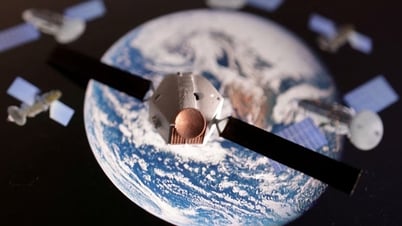


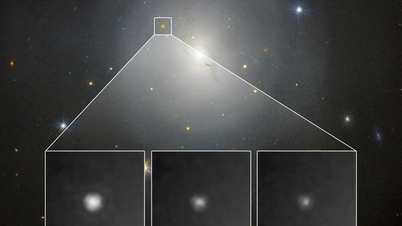















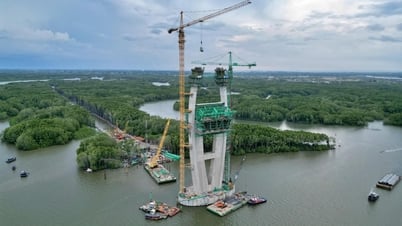




![[Photo] Vice President Vo Thi Anh Xuan, French President Emmanuel Macron and his wife visit Hanoi University of Science and Technology](https://vphoto.vietnam.vn/thumb/1200x675/vietnam/resource/IMAGE/2025/5/27/267b6f2bdf3e46439f081b49f6ec26b1)








































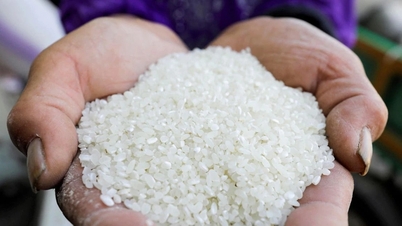



















Comment (0)